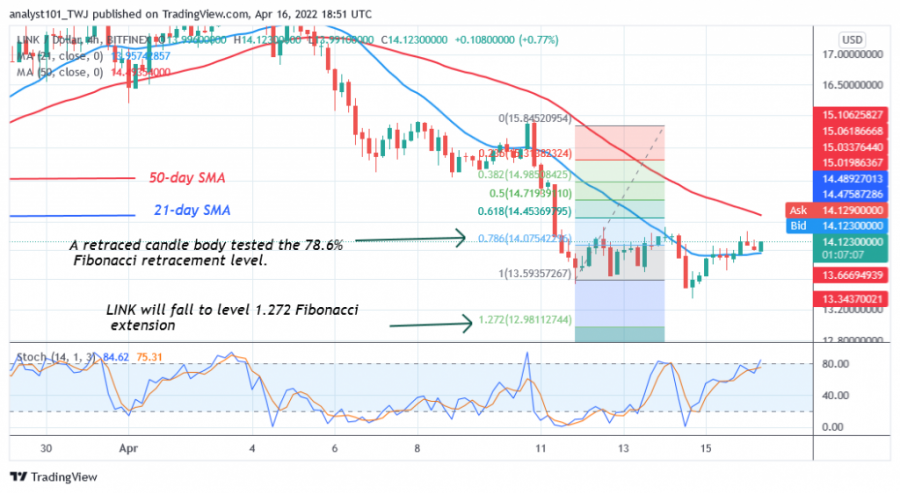Chainlink Consolidates Above $13, Cannot Break Recent High

The price of Chainlink (LINK) has fallen below the moving averages as the cryptocurrency reached the low of $13.53.
Chainlink (LINK) price long-term analysis: bearish.
After the recent slump, selling pressure has subsided and Chainlink has resumed its sideways movement. The cryptocurrency is fluctuating above the support of $13. The upward correction of the cryptocurrency is limited below the high of $14.26.
In other words, LINK /USD is moving in a narrow range between the prices of $13.50 and $14.26. The altcoin will fall back to a low of $12 if the bears go below the current support. On the other hand, the upward movement will resume if the price breaks the initial resistance at $14.26. The altcoin will rise to retest the moving averages or break above them. At the time of writing, the altcoin is trading at $14.11.
Chainlink (LINK) Indicator Reading
Chainlink’s price bars are below the moving averages, indicating a possible decline in the cryptocurrency. Chainlink has fallen to level 41 on the Relative Strength Index for the period 14. The market has reached the downtrend zone and is capable of further downward movement. The altcoin is above the 80% area of the daily stochastic. The market is approaching the overbought zone.
Technical Indicators:
Key resistance levels – $55 and $60.
Key support levels – $20 and $15
What is the next move for Chainlink (LINK)?
Chainlink is in a downtrend as the altcoin drops to the low of $13. Since April 11, Chainlink has resumed a sideways move above the $13 support. The upward movement is staved off at the high of $14.26. In the past week, the price of LINK has been fluctuating in a narrow range. There is a probability that the price will break down or break out.
Disclaimer. This analysis and forecast are the personal opinions of the author and are not a recommendation to buy or sell cryptocurrency and should not be viewed as an endorsement by Coin Idol. Readers should do their own research before investing funds.
Source: Read Full Article


